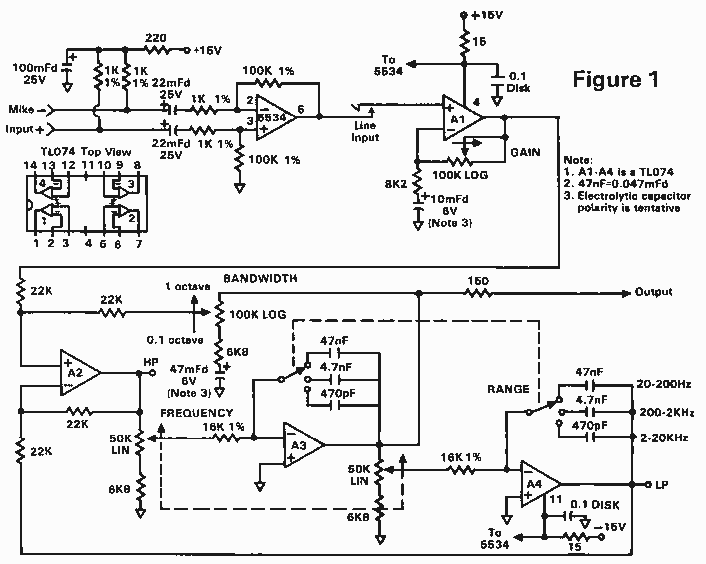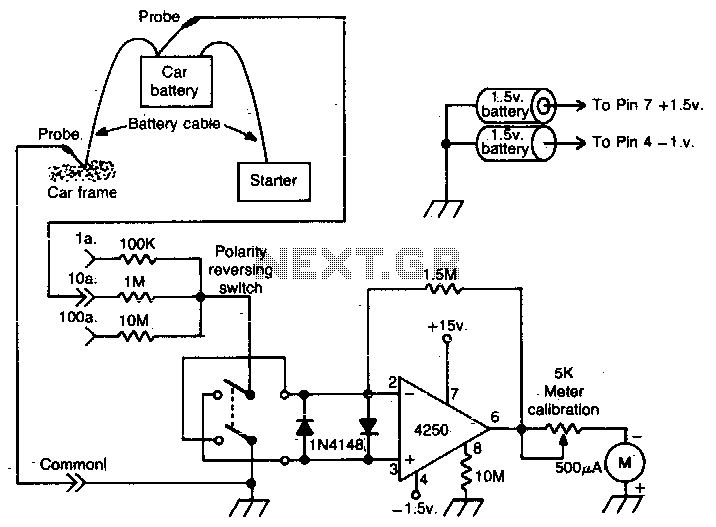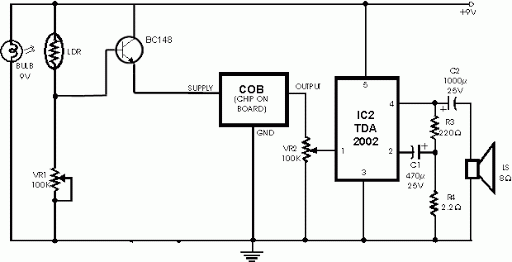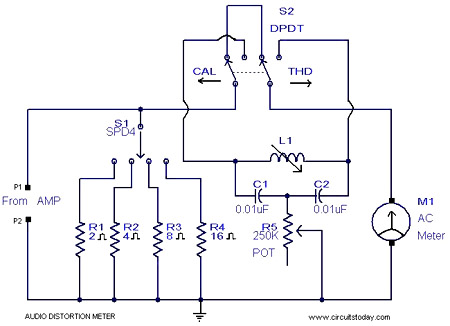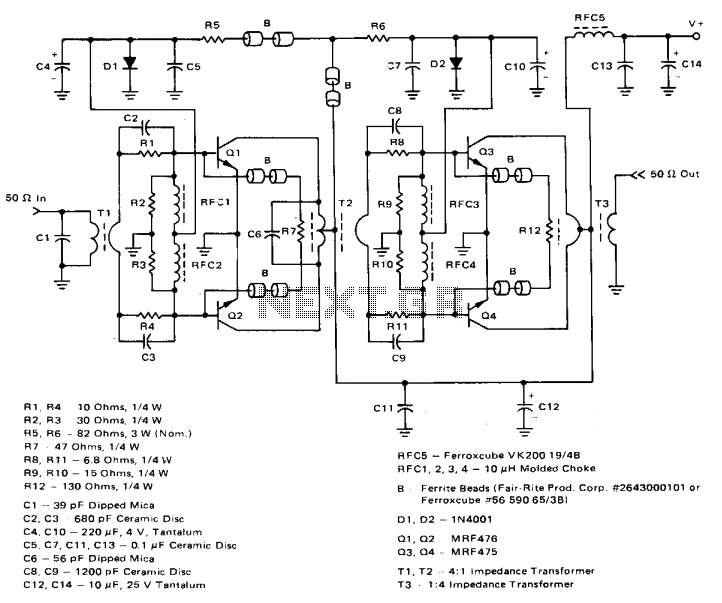
Distortion Analyzer
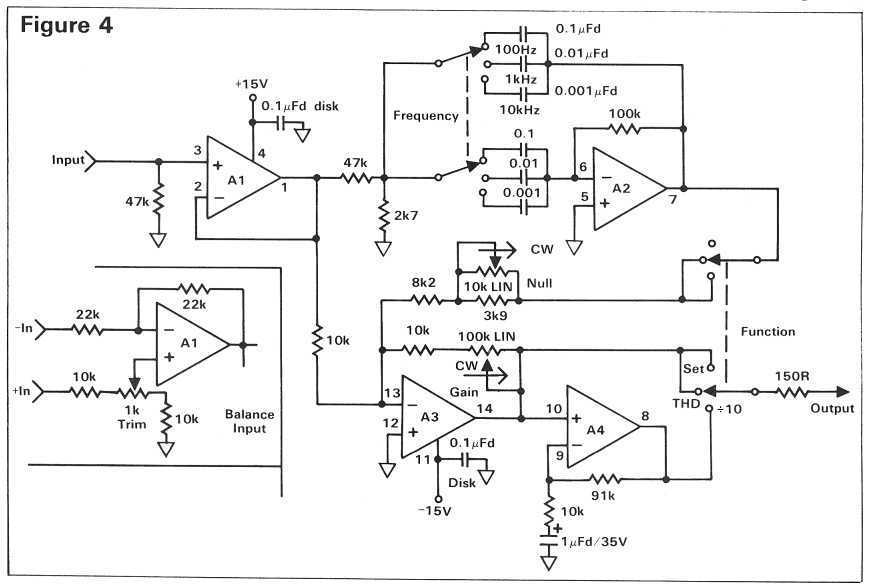
The pre-distortion circuit described here is extremely simple and only requires one trimmer adjustment, though you will need an accurate way to measure THD in order to achieve the best results. A dedicated distortion analyzer to help you adjust the linearizer circuit is shown later in this article. This analyzer has turned out to be one of the most useful little gadgets I have, given its simplicity and incredibly low price. The only thing keeping it from being lab quality is that it uses switched rather than continuously tuned frequencies. Therefore, you must adjust your sine wave generator to match its frequencies, rather than the other way around. At the heart of any THD meter is a notch filter that can completely remove the original test frequency. After filtering, it is an easy task to measure the harmonics and noise that remain, and relate them to the total signal as a percentage. It also helps.
The pre-distortion circuit is designed to improve linearity in amplifiers by compensating for distortion before it occurs. This circuit typically utilizes a feedback mechanism that adjusts the input signal based on the output signal's characteristics. The single trimmer adjustment mentioned allows for fine-tuning of the circuit to optimize performance for specific applications or component tolerances.
In the context of total harmonic distortion (THD) measurement, the circuit operates in conjunction with a dedicated distortion analyzer. This analyzer employs a notch filter, which is a critical component that effectively eliminates the fundamental frequency from the signal being analyzed. By removing this frequency, the analyzer can focus on the harmonics and noise present in the output, enabling accurate calculations of distortion percentages.
The use of switched frequencies in the analyzer, while a limitation compared to continuously tuned systems, is offset by the affordability and simplicity of the device. Users are required to adjust their sine wave generator to align with the analyzer's frequency settings, which is a straightforward process but necessitates precision to ensure accurate readings.
Overall, this pre-distortion circuit and its associated measurement tools form a practical solution for audio engineers and technicians aiming to enhance the fidelity of their audio systems by minimizing distortion. Proper setup and calibration are essential for achieving optimal results, making the understanding of both the circuit and measurement techniques critical for effective application.The pre-distortion circuit described here is extremely simple (Figure 1) and only requires one trimmer adjustment, though you`ll need an accurate way to measure THD in order to achieve the best results. A dedicated distortion analyzer to help you adjust the linearizer circuit is shown later in this article.
This analyzer has turned out to be one of the most useful little gadgets I have, given its simplicity and incredibly low price. The only thing keeping it from being lab quality is that it uses switched rather than continuously tuned frequencies.
Therefore, you must adjust your sine wave generator to match its frequencies, rather than the other way around. At the heart of any THD meter is a notch filter that can completely remove the original test frequency. After filtering, it is an easy task to measure the harmonics and noise that remain, and relate them to the total signal as a percentage.
It also helps 🔗 External reference
The pre-distortion circuit is designed to improve linearity in amplifiers by compensating for distortion before it occurs. This circuit typically utilizes a feedback mechanism that adjusts the input signal based on the output signal's characteristics. The single trimmer adjustment mentioned allows for fine-tuning of the circuit to optimize performance for specific applications or component tolerances.
In the context of total harmonic distortion (THD) measurement, the circuit operates in conjunction with a dedicated distortion analyzer. This analyzer employs a notch filter, which is a critical component that effectively eliminates the fundamental frequency from the signal being analyzed. By removing this frequency, the analyzer can focus on the harmonics and noise present in the output, enabling accurate calculations of distortion percentages.
The use of switched frequencies in the analyzer, while a limitation compared to continuously tuned systems, is offset by the affordability and simplicity of the device. Users are required to adjust their sine wave generator to align with the analyzer's frequency settings, which is a straightforward process but necessitates precision to ensure accurate readings.
Overall, this pre-distortion circuit and its associated measurement tools form a practical solution for audio engineers and technicians aiming to enhance the fidelity of their audio systems by minimizing distortion. Proper setup and calibration are essential for achieving optimal results, making the understanding of both the circuit and measurement techniques critical for effective application.The pre-distortion circuit described here is extremely simple (Figure 1) and only requires one trimmer adjustment, though you`ll need an accurate way to measure THD in order to achieve the best results. A dedicated distortion analyzer to help you adjust the linearizer circuit is shown later in this article.
This analyzer has turned out to be one of the most useful little gadgets I have, given its simplicity and incredibly low price. The only thing keeping it from being lab quality is that it uses switched rather than continuously tuned frequencies.
Therefore, you must adjust your sine wave generator to match its frequencies, rather than the other way around. At the heart of any THD meter is a notch filter that can completely remove the original test frequency. After filtering, it is an easy task to measure the harmonics and noise that remain, and relate them to the total signal as a percentage.
It also helps 🔗 External reference
